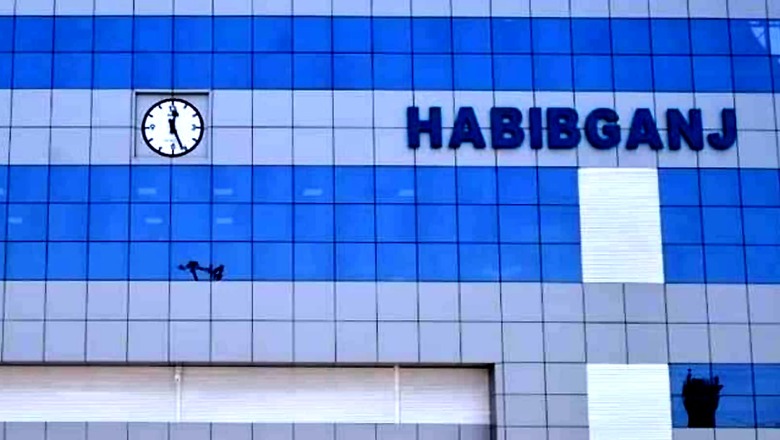
views
Prime Minister Modi will on Monday inaugurate Madhya Pradesh’s Habibganj station which has been redeveloped at a cost of Rs 100 crore and provided with airport-like amenities. The station in Bhopal has been renamed after the Gond queen Rani Kamalapati. The renaming of the station is also in accordance with the central government’s decision to celebrate November 15 as ‘Janjatiya Gaurav Diwas’ in remembrance of Birsa Munda.
Who was queen Kamlapati?
Rani Kamalapati was the 18th Century Gond queen of the region. She was the widow Gond ruler of Nizam Shah, chief of Ginnorgarh. Reportedly, there are no images of the Maharani, whose beauty was the stuff of legend. She built the seven-storey Kamalapati Palace that overlooks Upper and Lower Lakes and is now an ASI-protected monument.
According to a Gond legend, on moonlit nights, Rani Kamalapati would emerge from her waterside palace and float on the lake, carried afloat by a lotus flower and attended to by 500 maidens following her in rowing boats, the Times of India reported.
The Gond community comprises the largest tribal group of India with more than 1.2 crore population. Linguistically, the Gonds belong to the Gondi–Manda subgroup of the South Central branch of the Dravidian language family.
How The Name of Habibganj railway station changed?
The Madhya Pradesh government had written to the Ministry of Home Affairs (MHA) about renaming the recently redeveloped Habibganj station after Rani Kamlapati, the 18th Century Gond queen of the region. The letter from the state’s transport department has said that renaming the station is also in accordance with the central government’s decision to celebrate November 15 as ‘Janjatiya Gaurav Diwas’ in remembrance of revered tribal leader and freedom fighter Birsa Munda.
Madhya Pradesh Chief Minister Shivraj Singh Chouhan also thanked Prime Minister Narendra Modi for allowing the state government to rename the station. The state government also issued a gazette notification stating that the changed name will be spelled at Rani Kamalapati Railway Station. Chouhan hailed Rani Kamalapati as the pride of the Gond community and “the last Hindu queen of Bhopal”.
The decision of the state government to rename the station as Rani Kamlapati station came after BJP MP from Bhopal Pragya Singh Thakur demanded that the station be renamed after former Prime Minister late Atal Bihari Vajpayee.
The work of changing old name boards at the railway station, located in the new Bhopal area, also started.
The state’s Public Relations Department shared a news clip on Twitter, saying that the station was built in 1905 and then it was known as Shahpur. It was named Habibganj station in 1979 when it was expanded.
How are the names of railway stations change?
The name of Allahabad railway station has been changed to Prayagraj and Mughalsarai railway junction has been renamed Pt Deen Dayal Upadhyay junction recently.
It is to be noted here that though the Indian Railways own the station, it does not get involved in renaming it. The renaming of a railway station is a state subject. The state governments send requests to the MHA and then the ministry takes the decision keeping the Ministry of Railways informed about the developments.
According to a report in The Indian Express, it is ensured that no other station with the new name proposed exists anywhere in India.
What Next?
Once the name change is approved, the Indian Railways begins the necessary work such as issuing a new station code, changing boards at the building, platform signage, and to enter the new name into its ticketing system as well. The names and their spellings in different languages shall be as approved by the state government.
As per the Indian Railway Works Manual, “The station names shall be exhibited in the following order: Regional Language, Hindi, and English, except for Tamil Nadu where the use of Hindi will be restricted to important stations and pilgrim centers as determined by the Commercial Department. Where the Regional language is Hindi, the name boards will be in two languages, Hindi and English…” The script for the station names in Hindi shall be Devnagari and for other languages as adopted by the respective state governments.
Read all the Latest India News here
















Comments
0 comment